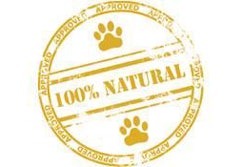Those of us who love, live with and/or work with pets know intuitively the many benefits they bring to people. But can those benefits be quantified and backed by sound, scientific research?
More and more experts and entities seem to think so. About this time last year, global petfood giant Mars Petcare announced that its Waltham Centre for Pet Nutrition was teaming up with the Eunice Kennedy Shriver National Institute of Child Health and Human Development, part of the US National Institutes of Health (NIH), to study whether animals have a tangible effect on children’s well-being.
In fact, this August NIH issued a “funding opportunity announcement”—government-speak for a grant application—for the study of the impact of human-animal interaction on child health and development. So if your company works with any universities or other organizations doing research in this area, you can direct them there.
At the end of September, Mars unveiled its latest initiative in this area. Power of Pets is a collaboration with YMCAs in five US cities to promote the benefits of pet ownership to human health.
At the same time, Mars released results of a study of 1,000 US pet owners on exercising with pets and other aspects of human health they believe their pets confer. Some highlights:
- Improving their overall well-being was the main reason respondents gave for having a pet, with 66% choosing it; 61% also said they owned pets because they wanted the companionship;
- Half of the respondents said it’s more important to maintain a positive relationship with their pet than with their best friend. Women were more likely to say this than men, 53% to 46%;
- 95% said they have a very strong emotional connection to their pet, and 63% said they’re extremely attached to their pet. Again, women were more likely to be extremely attached than men, 69% to 56%;
- Respondents reported a gamut of positive emotions associated with their pets, such as happiness (83%), love (70%), calmness (65%), excitement (31%) and even invigoration (18%); and
- 36% of pet owners ages 18-44 admitted quality time with their pet excites them, compared to 22% of those 45 and older.
You might be thinking right about now: Of course a huge company like Mars can throw its vast resources behind research like this. But it’s not alone.
Recently the American Pet Products Association (APPA), which represents hundreds of petfood (and other pet) companies of varying sizes, announced a similar initiative. APPA is partnering with Dr. Alan Beck at Purdue University to launch the Human Animal Bond Research Initiative (HABRI) with the main goals of creating a central database for all research on the topic and encouraging the US Congress to provide resources to NIH so it can allocate money toward such research.
What does this mean for petfood? It may seem like preaching to the choir. Yet in the September issue of Pet Business magazine, Bob Vetere, president of APPA, made this case: ... “The fastest growing demographic in the US population (Hispanic, Black, Asian and children) represent some of the lower incidences of pet ownership. Left unchecked, this does not bode well for such a vibrant industry.”
If that’s true, then it may make sense for all of us to start making the case for the benefits of pet ownership in our marketing, promotions and communications.

















